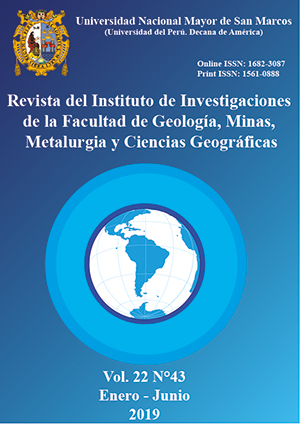Influence of the cenozoic tectonics from the Peruvian Forearc on the Morro Solar deformation mechanism by means of structural analysis
DOI:
https://doi.org/10.15381/iigeo.v22i43.16699Keywords:
Morro Solar; cenozoic tectonics; peruvian forearc; structural analysisAbstract
The outcrops from the Morro Solar locality gave birth in the Lower Cretaceous within a purely extensional tectonic regime which changed to a compressional regime linked to an oblique plate tectonic convergence as of the Upper Cretaceous and during Cenozoic era. In order to study the pos sedimentary cenozoic tectonics that superimposed to such outcrops, it has been necessary to collect an important quantity of structural data from surface represented by the geometric orientation of fault surfaces that shows a observable tectonic displacement as well microstructures such slickenlines and kinematic indicators from a fragile environment. Accordingly, it was possible to determine two structural systems that worked in different times. The younger structural system is composed by a set of ~NE-SW to ~W-E normal faults which by means of the proposed structural analysis in this study it concluded that they were yielded as the result of a “strain partitioning” that occurred during the Cenozoic times within the central Peruvian forearc.
Downloads
Published
Issue
Section
License
Copyright (c) 2019 Luis Alberto Ayala Carazas

This work is licensed under a Creative Commons Attribution-NonCommercial-ShareAlike 4.0 International License.
AUTHORS RETAIN THEIR RIGHTS:
a. Authors retain their trade mark rights and patent, and also on any process or procedure described in the article.
b. Authors retain their right to share, copy, distribute, perform and publicly communicate their article (eg, to place their article in an institutional repository or publish it in a book), with an acknowledgment of its initial publication in the Rev. Inst. investig. Fac. minas metal cienc. geogr.
c. Authors retain theirs right to make a subsequent publication of their work, to use the article or any part thereof (eg a compilation of his papers, lecture notes, thesis, or a book), always indicating the source of publication (the originator of the work, journal, volume, number and date).






